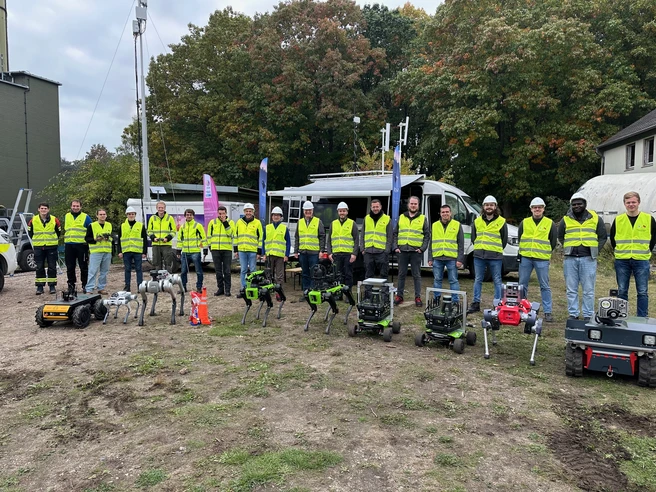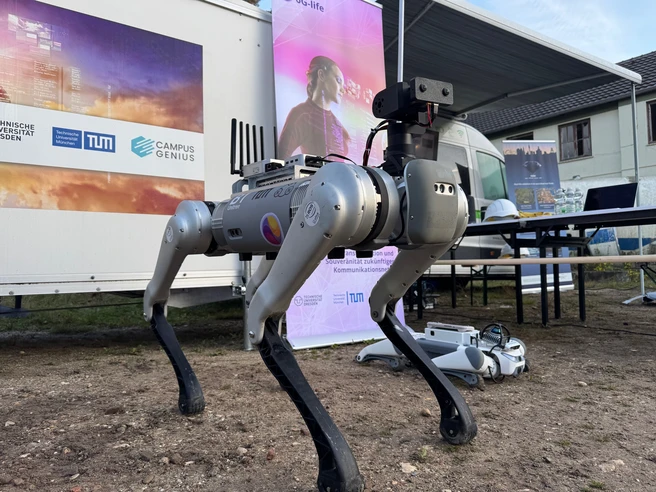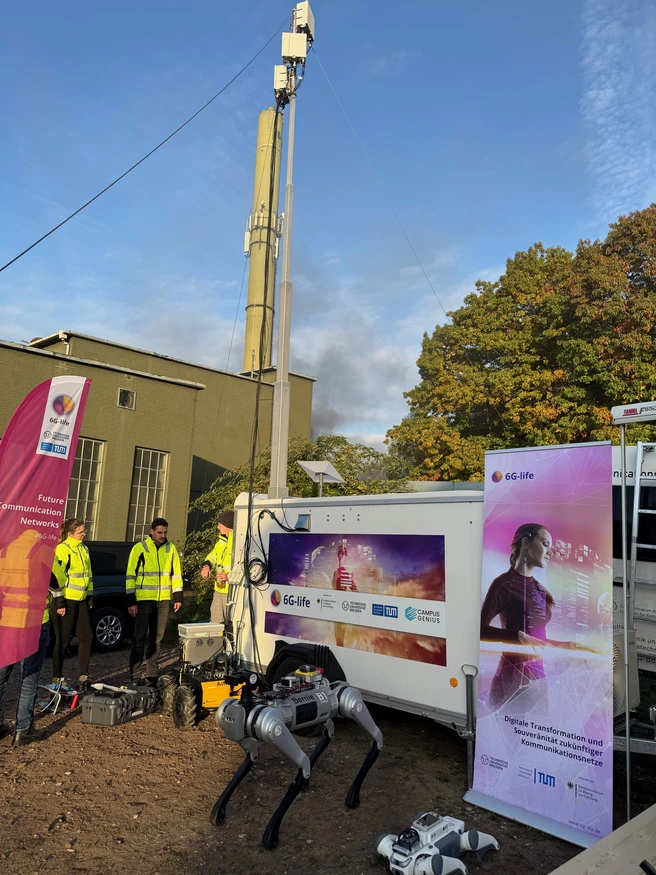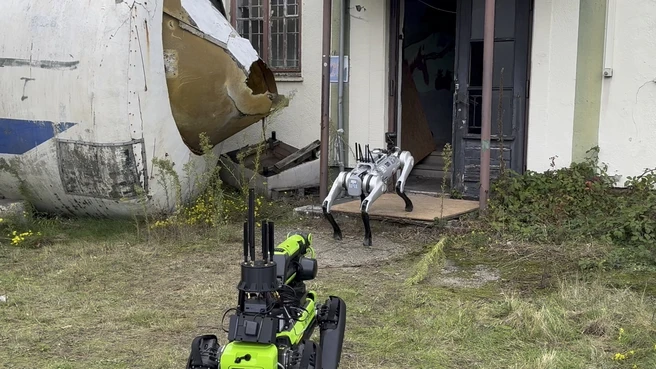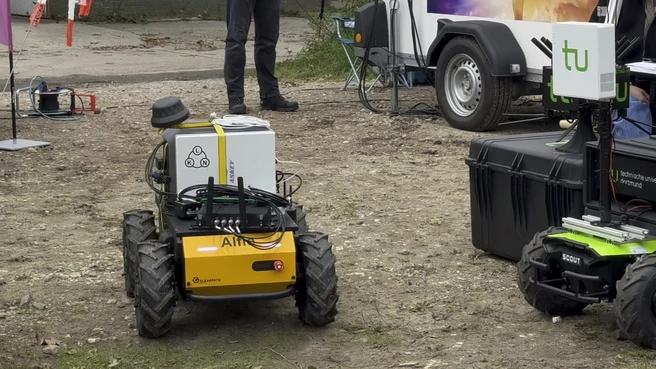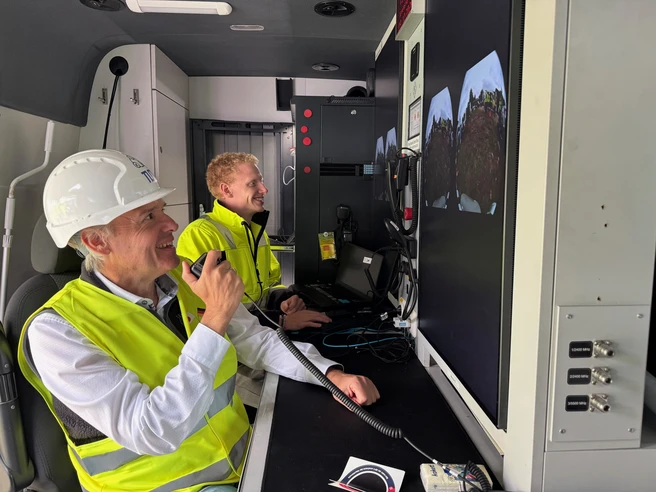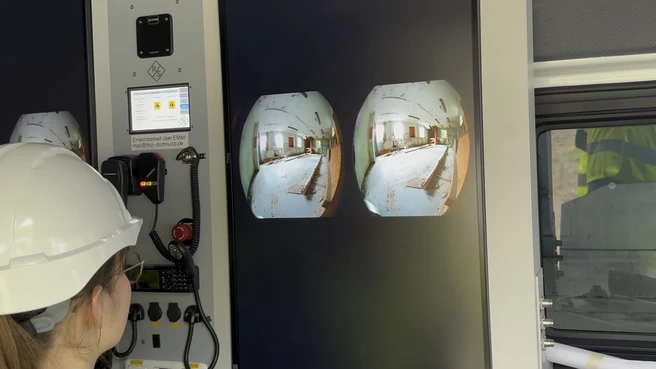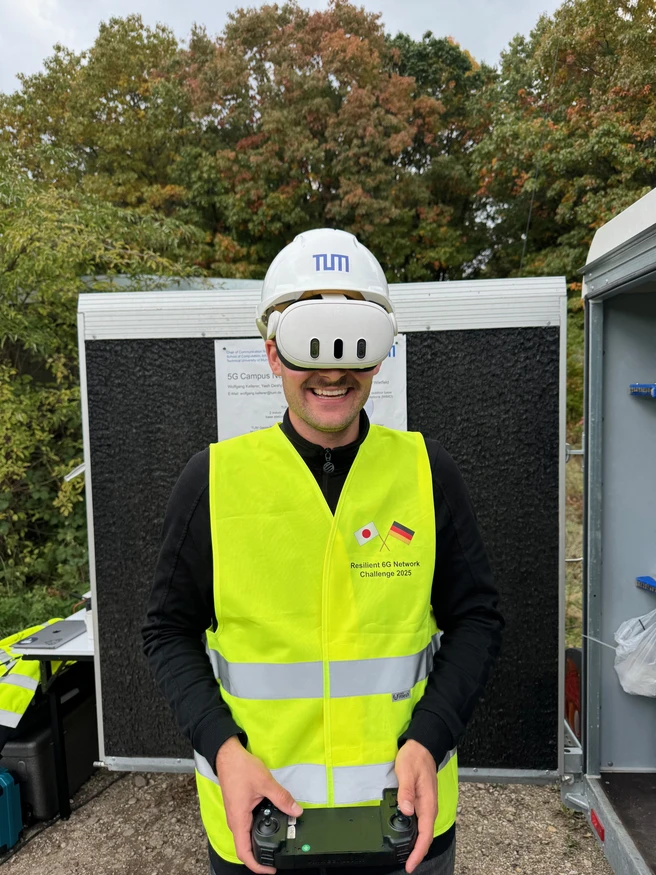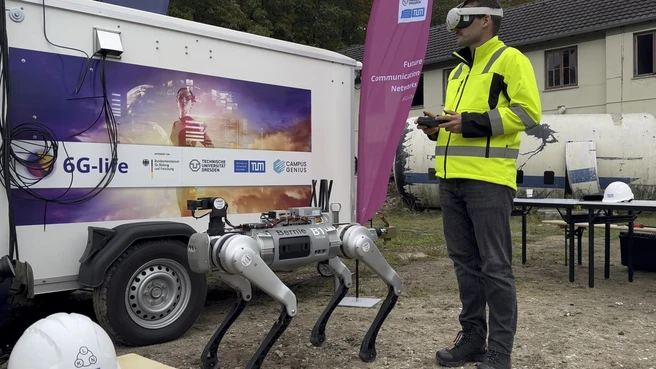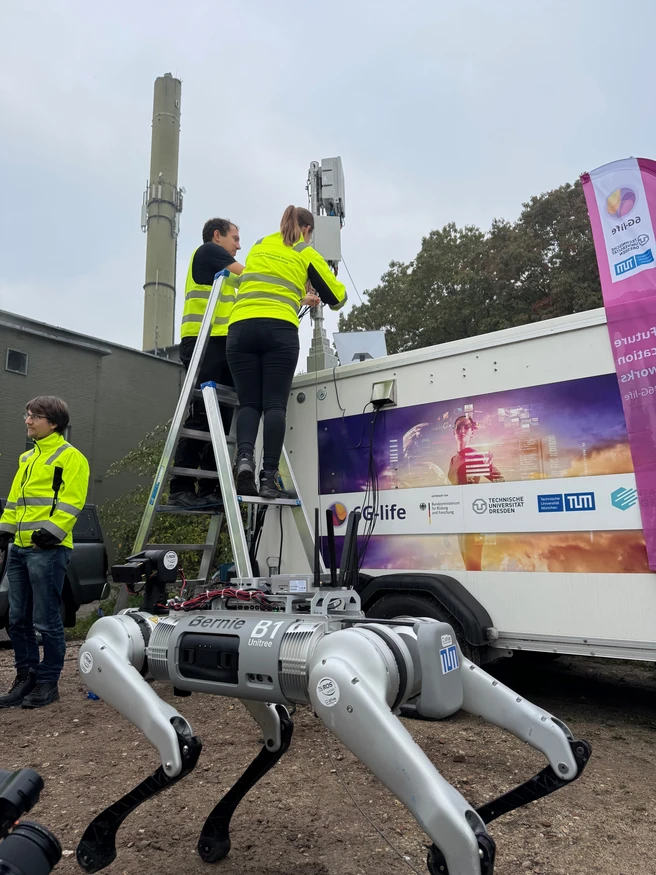As part of the BMFTR funded project 6G-life, the LKN team participated in the Resilient 6G Network Challenge a joint German - Japanese project. Different 6G communication technologies have been combined to provide resilient connectivity for teleoperated robots. This Challenge is part of a collaboration between the two German 6G Research Hubs 6G-life, 6GEM (TU Dortmund and the Deutsches Rettungsrobotik Zentrum, in particular) and the National Institute of Information and Communications Technology (NICT) of Japan and taook place in the week of October 6 - 9, 2025 in the Training Base Weeze, Europe's largest training center.
In the final challenge, the teams had to perform two missions supported by their latest 6G communication technology research developments: the LKN team setp up their trailer-based 5G campus network with a 3 sector base station on a 6m high pole, a CampusGenius core and a Startlink-based satellite Internet connection. This was complemented by the TU Dortmund mobile Open-RAN network. Moreover, TU Dortmund, TUM and NICT provided coverage extenders by 6G mobile base stations, 6G mesh networks and satellite-based solutions. The SEAMLESS protocol developed by TU Dortmund supported the combination of the different communication technologies for resilient operation. All teams operated different mobile robot platforms (TUM, TUDo, NICT, DRZ) and drones (TU Dresden, DRZ) via different resilient 6G communication technologies. The TUM VR-based robot crontrol has been developed in cooperation with OliveRobotics.
- Mission 1: Teleoperated CBRNE incitent mitigation inside an unknown building full of smoke: Under the guidance of the mission control by the Deutsches Rettungsrobotik Zentrum (DRZ) first drones explored the building spotting an open canister with potentially dangerous liquids; then quadruped rescue robots were sent inside the building controled over 6G networks via 3D VR setups to close the canister and find additional dangerous items that were hidden in form of QR-codes; all tasks were successfully completed. (CBRNE = Chemical, Biological, Radiological, Nuclear, and Explosive)
- Mission 2: Search and Rescue with quadruped robots in a hazadous post earthquake scenario, outdoor and indoor around a huge destroyed building: Again qudruped robots were send and controled via 3D VR over 6G networks; as the 5G coverage inside the building and behind the building was weak, mobile extender platforms were sent to the network edge to enhance the coverage and to guarantee resilient communcation throughout the mission; again, all tasks were successfully completed.
6G-life is one of the four German 6G Research Hubs jointly coordinated and performed by TUM and TU Dresden. 6G-life and 6GEM receive financial support by the Federal Ministry of Research, Technology and Space of Germany (BMFTR) in the programme of "Souverän. Digital. Vernetzt."
